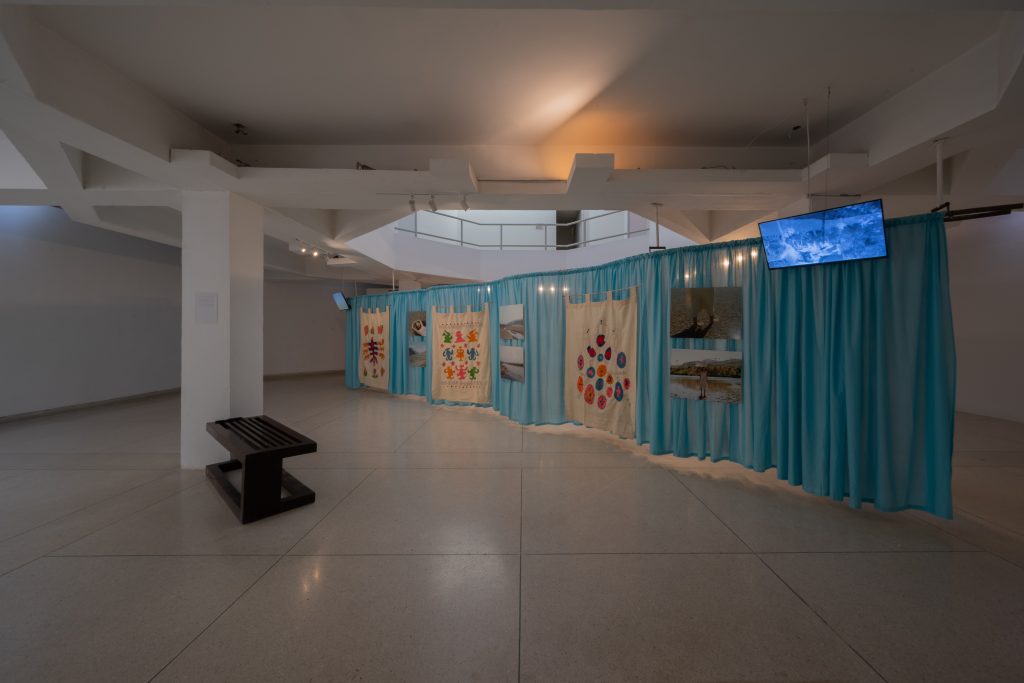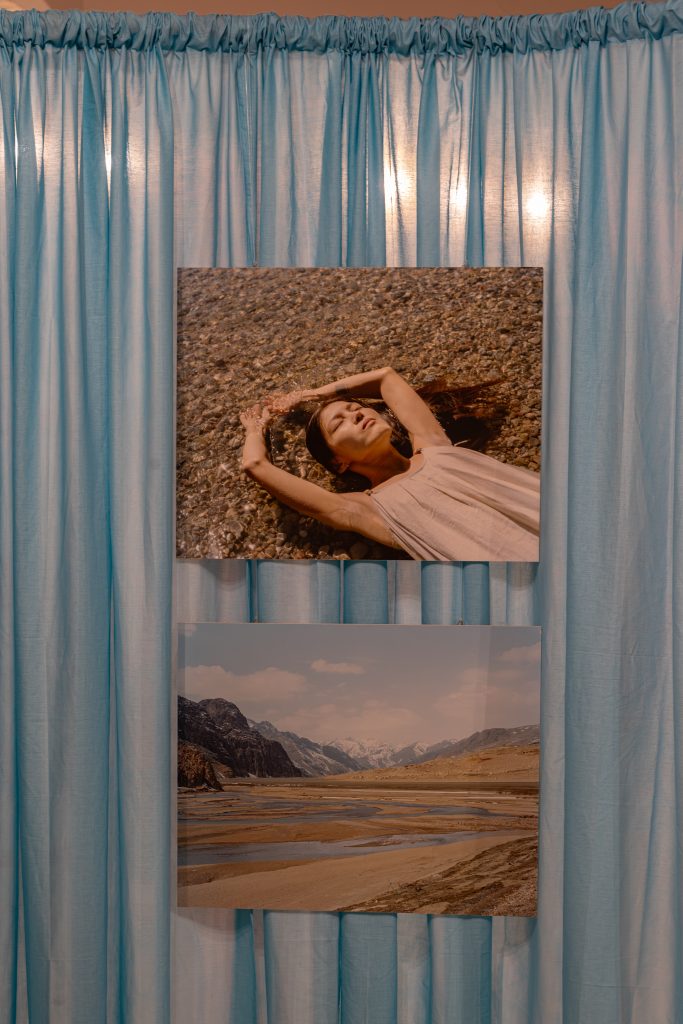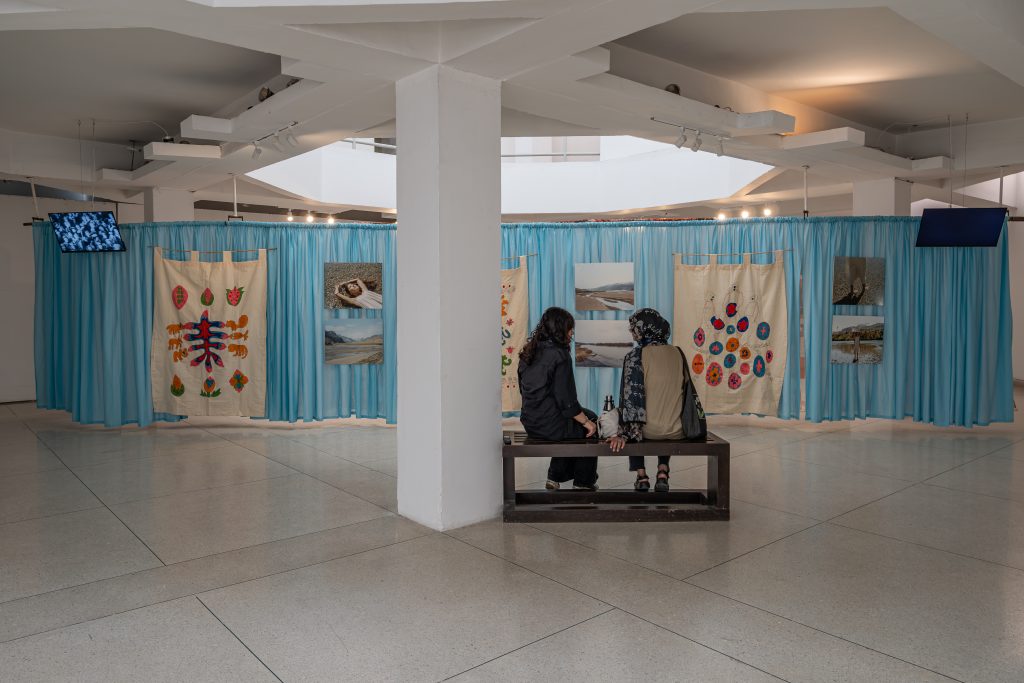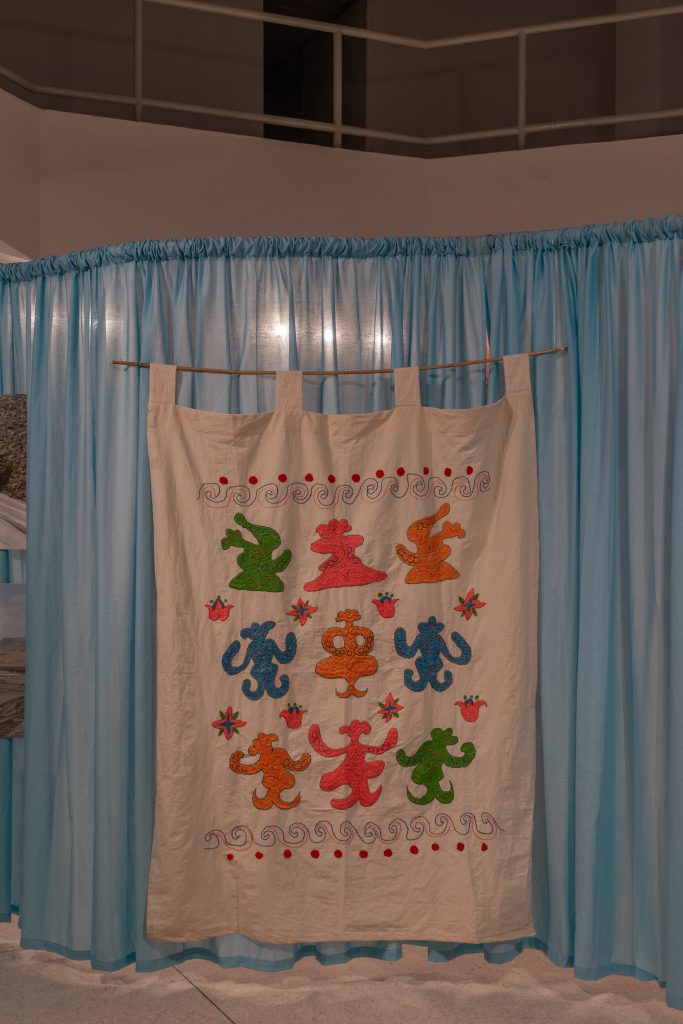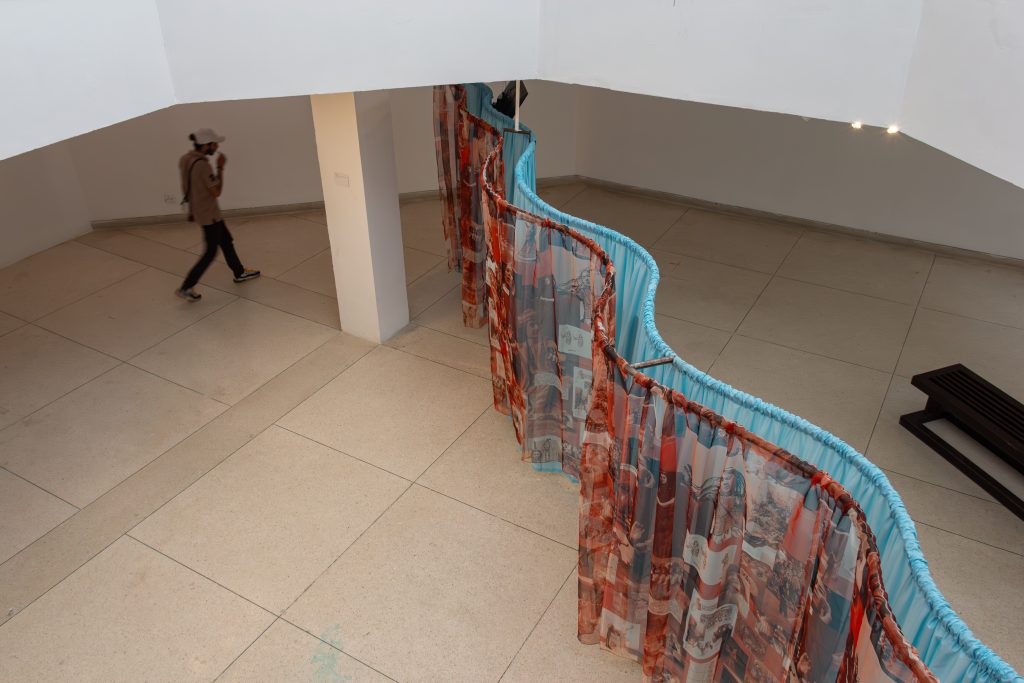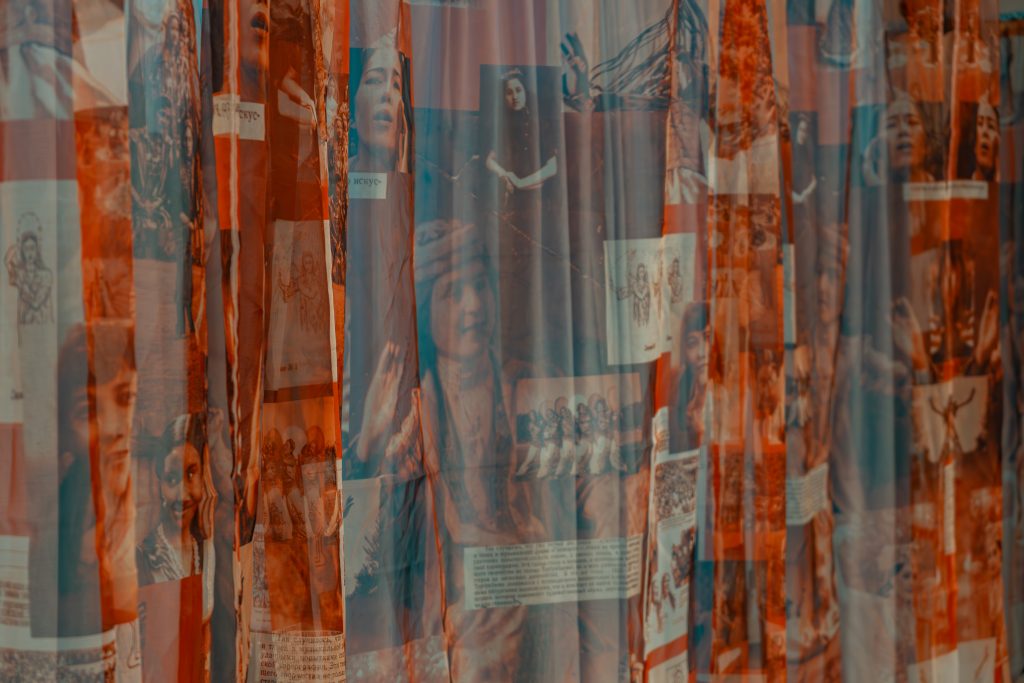DAVRA
Taming Waters and Women in Soviet Central Asia, 2024
Multimedia installation with printed fabric, archival films, embroideries, photographs, and drawings
Taming Women and Waters in Soviet Central Asia looks at the Great Fergana Canal, a 270-km long waterway built in just 45 days in 1939 between Uzbekistan and Tajikistan to divert water from the Syr Darya river to enable the industrial-scale production of cotton, the “white gold” of Central Asia. At the time, it was lauded as a symbol of Soviet-era progress; in hindsight, the modernization project has become an ecological disaster, with the drying out of the Aral Sea and salinization of formerly fertile land.
The installation historicizes the intersectional exploitation of the natural resources and women recruited for the Soviet workforce. Hanging from a meandering line recalling the flow of the Syr Darya river, a fabric imprinted with archival photographs showing the sheer scale and enduring legacy of women’s labor and the continuous significance of cotton production in the country’s agricultural landscape. On the other side of the curtain, archival footage shows the construction of the canal and the Cotton Dance, which was performed by women to motivate construction workers, while embroideries, color photographs, and drawings imagine other relations between water, women, dance, and cotton.
DAVRA research group (est. 2021) connects and develops the Central Asian art scene by fostering dynamic exchanges of experiences and knowledge. It grew out of Saodat Ismailova’s “Chilltan” project at documenta fifteen and since then has been actively working both in Central Asia and beyond. The presentation of Taming Women and Waters in Soviet Central Asia for “Of Mountains and Seas” has been made possible by members Madina Joldybek, Munisa Kholkhujaeva, Saodat Ismailova, and Zumrad Mirzalieva.
ڈآورآ
“ٹیمِنگ وومِن اینڈ واٹرز اِن سوویت سینٹرل ایشیا” 2024 “
پرنٹ شدہ فیبرک، آرکائیو فلموں، کڑھائیوں، تصاویر، ڈرائنگ کے ساتھ ملٹی میڈیا تنصیب
ٹیمِنگ وومِن اینڈ واٹرز اِن سوویت سینٹرل ایشیا” کا منصوبہ گریٹ فرغانہ نہر پر مرکوز ہے، جو 1939 میں ازبکستان اور تاجکستان کے درمیان بنائی گئی تھی۔ یہ نہر 270 کلومیٹر لمبی بنایُ گیُ تاکہ بڑے پیمانے پر روئی کی پیداوار کے لیے پانی کا رخ موڑا جا سکے۔ اُس وقت اسے سوویت ترقی کی علامت سمجھا گیا تھا، لیکن بعد میں اس نے ماحولیاتی مسائل پیدا کیے، جیسے ارال سمندر کا خشک ہونا اور زمین کی زرخیزی کا ختم ہونا۔
یہ تنصیب اس بات پر روشنی ڈالتی ہے کہ سوویت صنعت کے لیے قدرتی وسائل اور خواتین دونوں کا استحصال کیا گیا۔ ایک کپڑا، جو سیردریا دریا کے بہاؤ سے مشابہت رکھتا ہے، پرانی تصاویر پیش کرتا ہے جن میں خواتین کو روئی کے کھیتوں میں محنت کرتے دکھایا گیا ہے۔ آرکائیول ویڈیوز نہر کی تعمیر اور “کاٹن ڈانس” دکھاتی ہیں، جو خواتین مزدوروں کو دکھانے کے لیے کیا کرتی تھیں۔ اس تنصیب کی کڑھائی، تصاویر اور ڈرائنگ ایک متبادل نظریات پیش کرتی ہیں جس میں پانی، خواتین، رقص اور روئی کے درمیان تعلقات کو دکھایا گیا ہے ۔
ڈآورآ ریسرچ گروپ 2021 میں قائم ہوا۔ یہ وسطی ایشیا سے نکلنے والے فن کو تجربے اور علم کے کے ذریعے فروغ دیتا ہے۔ یہ ساوُدات اسماعیلووا کے ڈآکیومینٹا ففٹین منصوبے “چلتن” میں شروع ہوا اور اب تک وسطی ایشیا میں قایُم ہے۔ اس گروپ کے اراکین میں شامل مدینہ جولدیبیک، منیسہ خولخوجیوا، ساوُدات اسماعیلووا اور زمراد مرزالئیوا ہیں، جنہوں نے “ٹیمِنگ وومِن اینڈ واٹرز اِن سوویت سینٹرل ایشیا” کی نمائش کو “آف ماوُنٹینز اینڈ سیز” کے لیے ممکن بنایا۔

